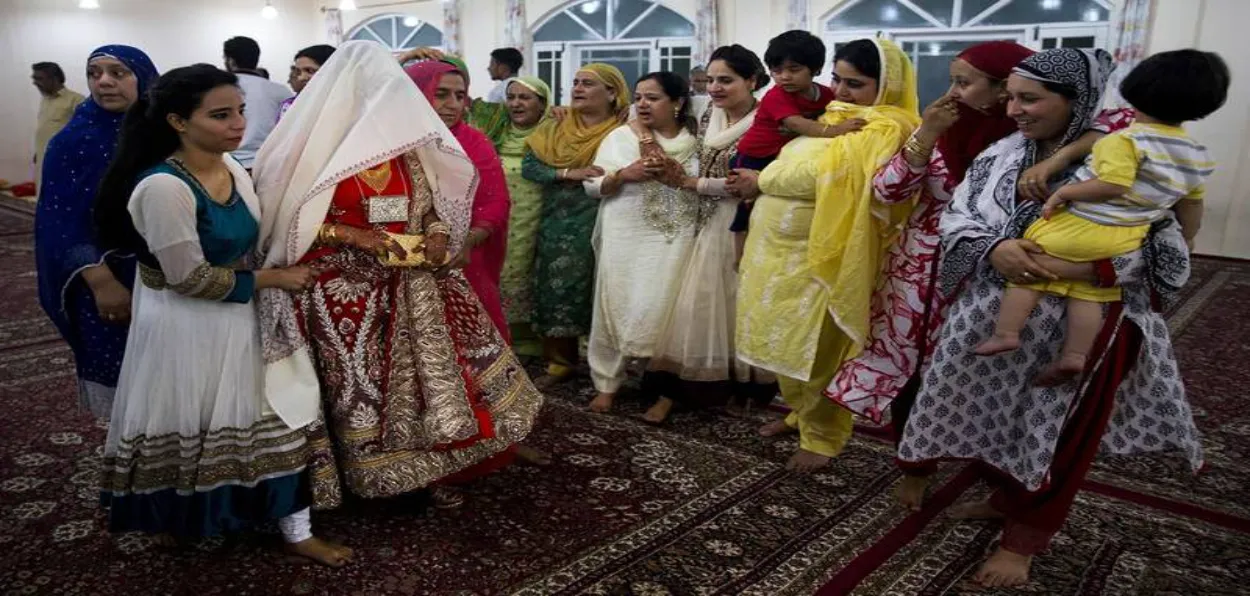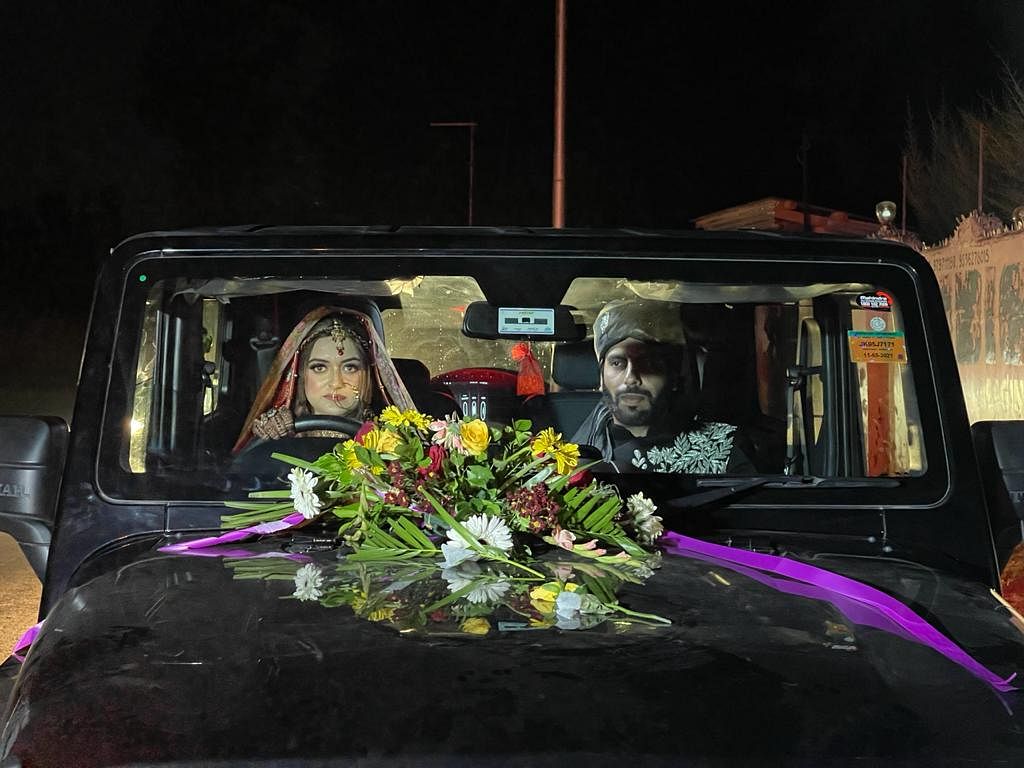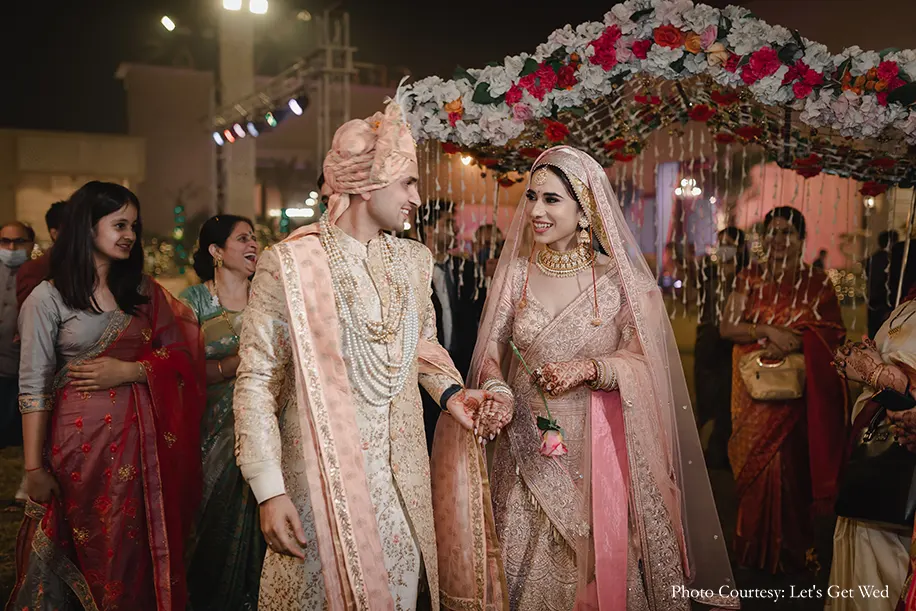
Ahmed Ali Fayyaz/Srinagar
The displacement of Kashmir’s religious minority after the outbreak of an armed Islamist insurgency in 1989 struck a big blow to the valley’s centuries-old composite culture. The Kashmiri Pandits suffered not only loss of life and property but were also bereft of their cultural traditions, lifestyle, language, and the rites and rituals related to their life and death.
With time, resident Muslims too underwent remarkable changes in their lifestyle, culinary habits, sartorial tastes as well as wedding and funeral rituals. Over a hundred baratis used to accompany the groom to the bride’s home until 1990. Over the years, the standard size of a Muslim barat has been reduced to just 20-30 guests.
Some of the Muslim grooms cut it further to 10-15. The IAS topper of 2010, Dr. Shah Faesal, who was then Deputy Commissioner of Bandipora, was accompanied by just 5 baratis. At many such weddings, the groom and the guests are served only dates and saffron kehwa instead of the scrumptious 30-dish mutton feast of Wazwaan.
While the groom used to go to the bride’s home with barat on horseback, the bride used to be taken out in a decorated palanquin called ‘zanpaan’ (palanquin). It has changed completely over time but well before the turbulence and not for any political or conflict reasons. Since the 1980s, most of the grooms and brides have been taken out in profusely decorated swanky motor cars.

A Kashmiri bride drives her just married husband to her in-laws home
In August 2021, the video of a Kashmiri bride driving with the groom to his house in a Mahindra Thar in Baramulla, with herself behind the wheel, went viral on social media. It is not a commonplace spectacle in Kashmir but signifies changes in rituals and traditions of the valley’s weddings. The groom was a young politician and his brother a Police officer but it’s not an essential elitist demonstration.
Notwithstanding a substantial number of ‘love marriages’, the sequence of wedding rituals among both Muslims and Pandits begins with the matching of the horoscopes. Muslims call it ‘sitara bagnai’ and Pandits know it as ‘tekin’. Both consult spiritually high astrologers. Muslims call them ‘Pir’ and Pandits ‘Gor’. While the ‘Pirs’ have their spiritual seats across the valley, the most prominent professional ‘Gors’ lived in Bijbehara and Nishat.
Both sides in both the communities also check the social and financial background of the bride and the groom including their moral sensitivity and value system. All this and much more is thoroughly investigated and scanned much earlier. The marriage date is proposed by the bride’s parents. As soon as the bride’s family gives their consent, the date for marriage is fixed in consultation with Pirs or Gors as the case may be. Some marriages take place years after the engagement.
Muslims continue with their traditions of sending ‘saatnama’ (the date fixed for the marriage) to the bride’s family. ‘Manzimyor’, the paid facilitating agent of marriages still exists, even as his role has reduced in most of the ‘love marriages’. In such marriages, the partners and their families settle things directly.
The custom of paying dowry to the groom has also faded out to a great extent, partly for societal changes and partly for the fear of the law which criminalizes such demands.

A Kashmiri Pandit bride and bridegroom on their wedding Day
Until recently, both Muslims and Pandits used to be strictly choosy in the selection of brides and grooms as most of them would not marry outside their caste and community. Some of the Muslim families would not marry outside a close cluster of relatives. Now inter-caste as well as inter-religion marriages take place in both communities. Several Shia-Sunni and Hindu-Muslim marriages take place every year.
After the Pandits left the Valley for Jammu, Delhi, and other places, many of their youth have chosen partners from other Hindu and non-Hindu communities to marry. Before 1990, it used to happen rarely as few Kashmiri women would prefer an ‘outsider’. Such a choice would also legally take away her entitlement to ownership of inherited or acquired properties like land and houses.
The centuries-old tradition of serving ‘wazwaan’ in ‘trami’, a big round copper platter in which four sitting guests share the food in a group, is also abandoned at several places, particularly in urban neighbourhoods. Buffet system has replaced ‘trami system’ at many community marriage halls.
Contrary to the vegetarian wedding feasts at the common Hindu marriages outside Kashmir, the Pandits in the valley used to cook both vegetarian and non-vegetarian. As per the tradition, both the communities used to engage Muslim and Hindu cooks to serve the feasts to the guests of the other community. It has become extinct after the displacement of the Pandits.
Some traditional customs like ‘fir-saal’ (pag pherra) to the groom by the bride’s family—in many cases the groom used to stay at the bride’s home for several days, a week after the wedding—have also been dispensed with over the years.
Wazwaan being cooked on Wurr
Both the communities used to share several wedding customs and rituals.
‘Kasamdree’, a proper commitment rite at the engagement ceremony, is still commonplace in both communities. Many Muslim families fix such ‘ring ceremonies’ at big brand hotels in Srinagar. Pandits used to have this ceremony usually before a deity at a temple.
Elder relatives from both sides meet at a temple and exchange flowers as a sign of the formalization of marriage. The bride’s family lays out a meal of conventional Kashmiri dishes. Her family also sends coins, fruits, dry fruits, and a pot containing nabad (misri, sugar lumps) to the groom’s house. In recent times, the bride and groom meet in a temple or at the former’s house and exchange rings.
In Kashmir’s traditional Pandit marriages, the ritual of cleaning the house, known as ‘livun’, was a common practice. The bride’s and the groom’s families would not usually perform ‘livun’ on the same day. This is also the day when the waza, the cook, arrives and puts together a mud-and-brick oven called ‘wurr’ outside the house.
ALSO READ: Assam Muslims celebrate weddings with a seasoning of Hindu traditions
‘Wanwun’, the practice of singing wedding songs in groups of females, continues to be common in both communities. Now both Muslims in Kashmir and the Pandits outside, engage professional wedding singers like the most expensive Raashid Jehangir, Shazia Bashir, and Sheela Zargar. Until 2010, famous folk dancer Haseena Akhtar used to perform on such occasions. Abdul Rashid Hafiz and Raashid Jehangir, with the latest addition of Noor Mohammad, continue to be the most popular singing stars at the valley’s marriage ceremonies.
